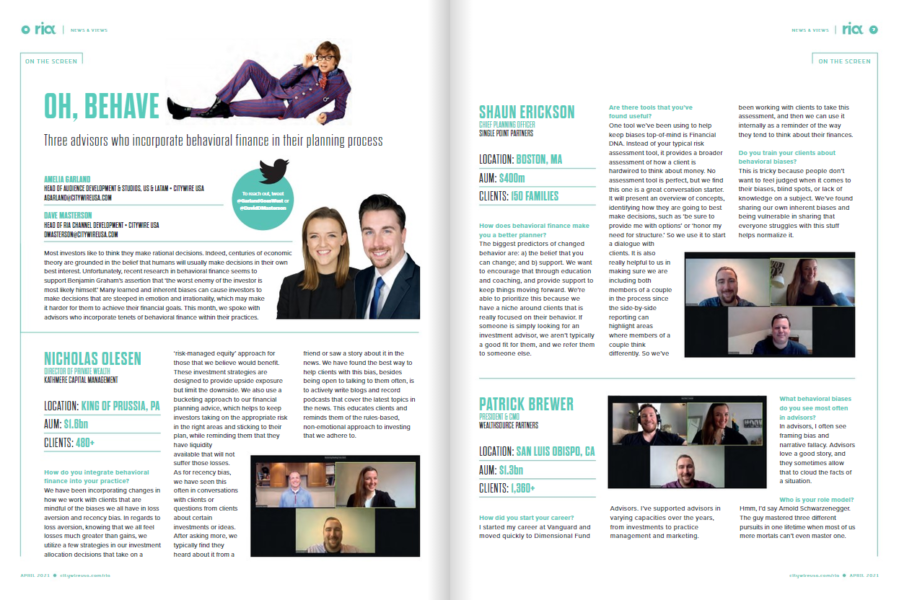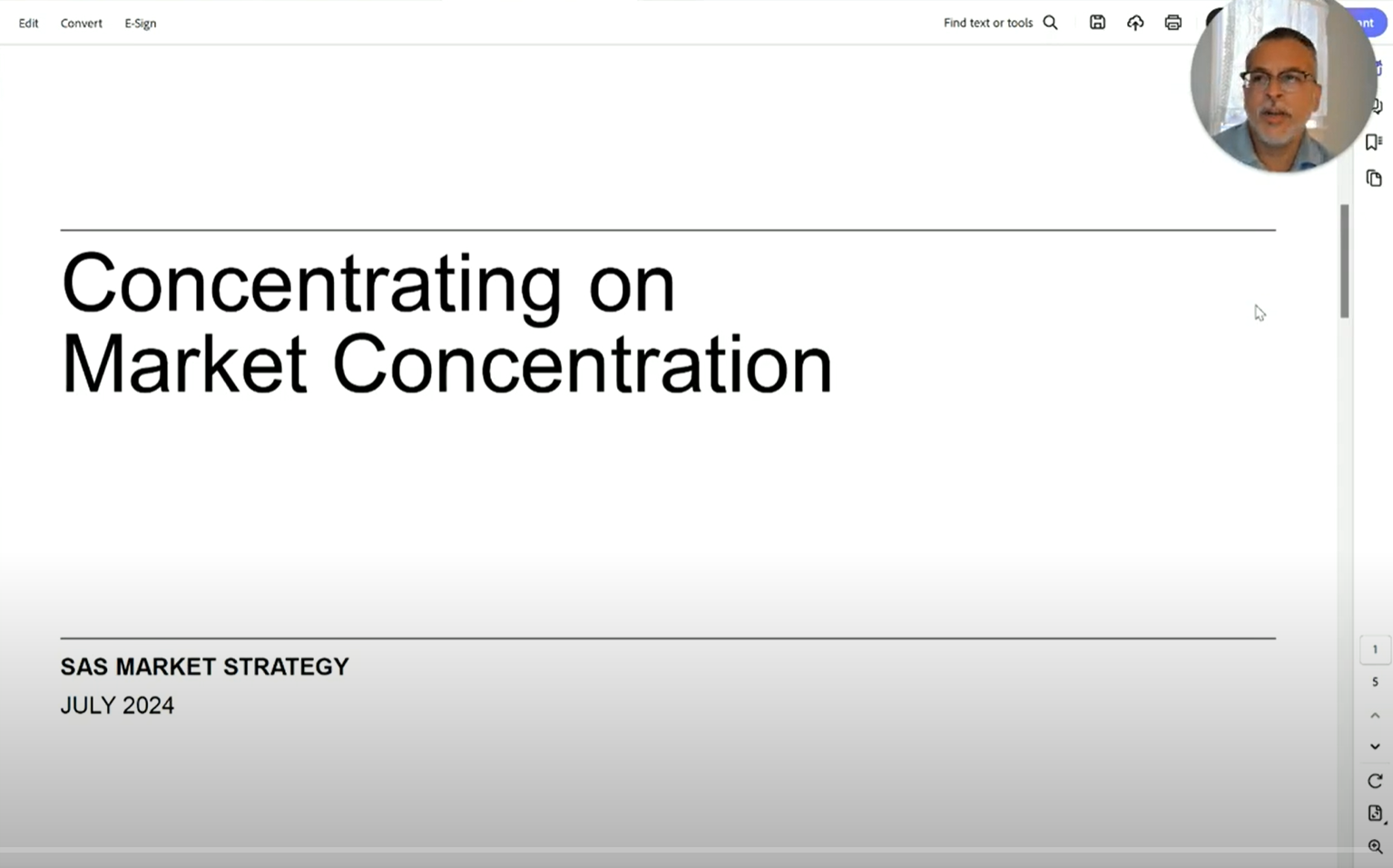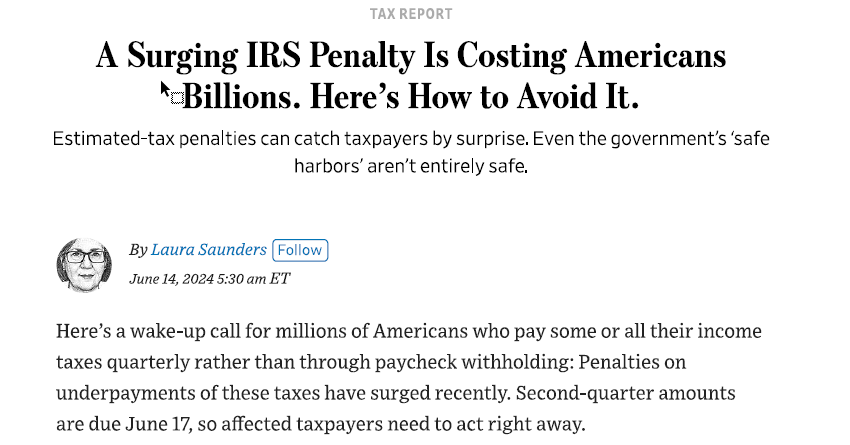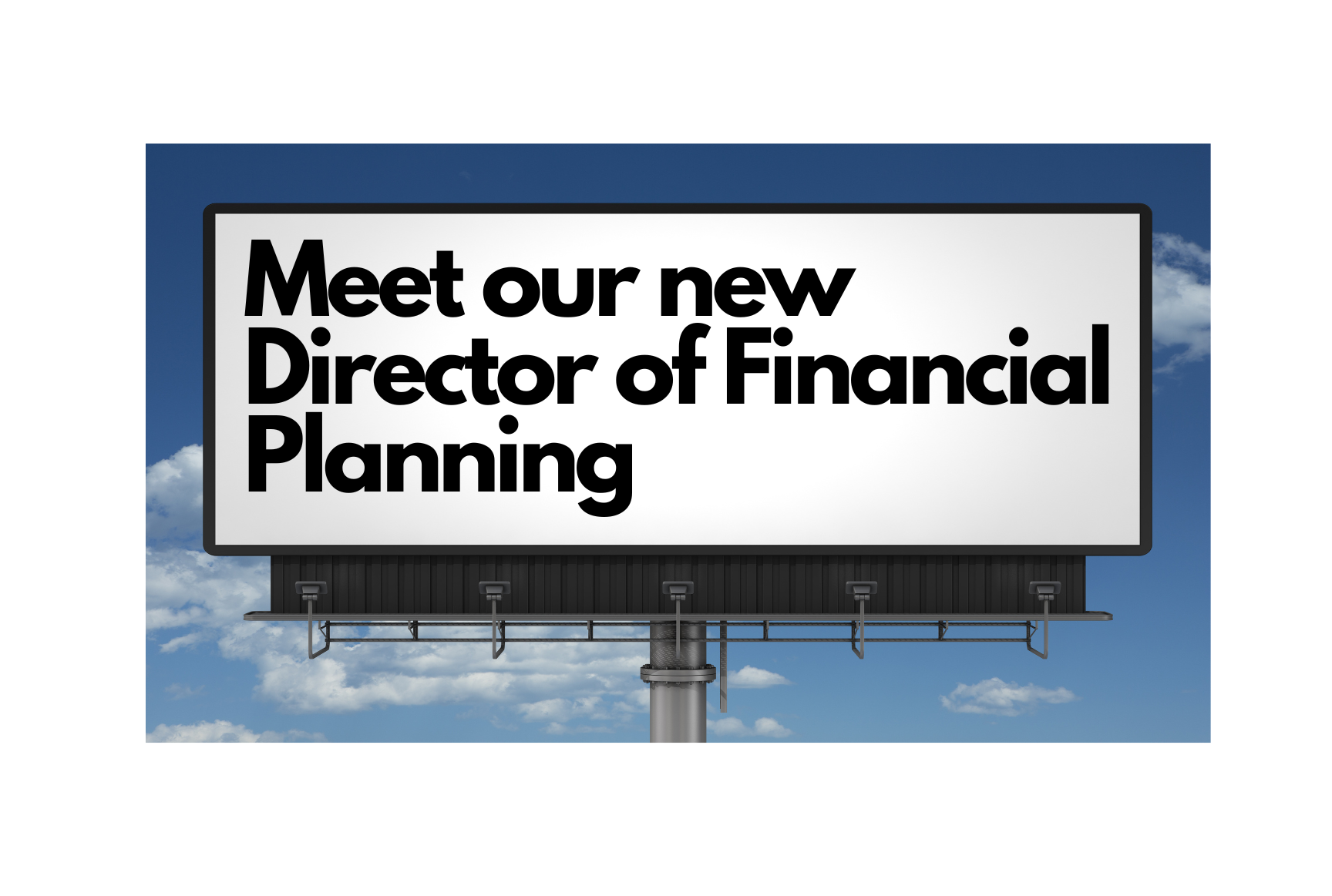Ok, I “borrowed” that headline from a recent CityWire piece I was featured in on financial planners incorporating behavioral finance into their client relationships. Since in an article your comments are limited to quick quotes, I thought I would expand a bit on our beliefs at SPP on the topic.
I think a lot of what you commonly see & hear discussed on behavioral finance focuses on investments and managing client behavior around investment decisions. While we certainly incorporate those concepts into the investment component of the relationship with clients, I don’t really think we’re all that unique in that way. It really should be table stakes in our profession now. I think, or hope (perhaps naively), that most advisors have embraced those principles at this point. This is the practice of educating the client on their portfolio and constantly reminding her of the plan of action we’ll take when things go sideways in the world or in her life. Not focusing on outperformance but on a consistent, disciplined message around investments and coaching through difficult times.
As a planning firm though, investments are only one piece of the overall puzzle in your financial life – and behavioral finance is really embedded in our process across the entire relationship.
I’m not going to pretend to be an academic on this stuff, there are plenty of people who have devoted their lives to studying it. We try to learn from them and implement those ideas into the real life relationships we have with clients.
It starts with some pretty basic concepts.
Listening: We always start the conversation with new clients by asking what the catalyst was for wanting to meet with us, what’s your acute pain point. I think as advisors we have a tendency to want to tackle the big boulders for clients, because we know quantitatively those are going to have the biggest impact. Our clients aren’t always ready for that right away though. We find that the acute pain point is more often focused on the pebbles than the boulders. So we need to meet you where you are at, and not try to tackle everything at once, otherwise decision fatigue will set in and progress will be stalled.
Building Trust: Often times in order to get to the point where you are ready to address the boulders, the key is that trust needs to be formed. We’ve found that by showing that we care about even the smallest details of your financial life (the ones that are often things that bother you the most) we can build that trust. We strive to know our clients’ financial lives as well as, if not better than, they do.
Consistently Focusing on Your Priorities: But that question of “what is most important to you” needs to happen on an ongoing basis, not just at the onset of the engagement. We do this through co-created agendas. We start each conversation with an agenda and outline of areas that we think would benefit from addressing, but the same questions are at the start of each conversation – ‘what is most important to you today?’ ‘Is there anything you want to add to this or prioritize?’
Acting as an Accountability Partner: As planners, there is a lot of analysis, education & coaching that goes into helping clients make decisions. But we believe that it is no longer good enough as an advisor to simply give technically sound advice and help you make decisions, we need to be involved in the adherence process as well. We need to make sure you are following through on those decisions and taking action. Lives are busy and you have priorities in life that go far beyond your finances, you need an accountability partner.
So, it is crucial to have a view into what is getting done, and what isn’t getting done for clients.
There are things that don’t get done simply because you get busy. For those items, you need a system of reminders of these actions. But sometimes not getting things done is a sign that you haven’t truly committed to the decision. In that case, we’ve got to revisit the process and understand what further education or coaching is needed for our clients. Often times, it may be that we didn’t do a good enough job outlining the “why” behind the action. Why should this be important to you, based on your priorities and goals, to take this action.
The biggest predictors of changed behavior are a) the belief that you can change, and b) support. We want to encourage that through education, coaching and by providing support to keep things moving forward.
We have some tools and techniques that we use to help us with this. Here’s a few new ones that we’ve begun to implement in the past year:
- Knudge: I mentioned before that it was critical to have an overview of where our clients stand on their action items, so that we can effectively remind you of the important actions you need to take, and have a view into the things that aren’t getting done. This allows us to revisit those issues with clients and understand if you simply haven’t gotten to it, or if there is something else blocking you from moving forward that requires us to revisit the decision. Knudge automates this process of reminders for us, and allows our client to drive when and how they receive these reminders from us. Meeting you where you are at with communication preferences. It also provides an overall view for us into what important dates are coming up in your lives and notifies us when you are getting things done.
- Financial DNA: This not your typical risk assessment tool, we don’t ask questions about “how would you feel if the market went down 10%”. It’s a broader assessment of how you are hardwired to think about money, focused on identifying the keys to your personal preferences around how to be communicated with and to adopting a plan. No assessment tool is perfect, but we find this one is a great conversation starter. It will present an overview of concepts identifying how you are going to best make decisions, such as “be sure to provide me with options” or “honor my need for structure”. So we use it to start a dialogue so you can confirm, ‘yes, that’s how I best learn’. It is also really helpful to us in making sure we are including both members of a couple in the process, it has some interesting side by side reports showing couples where they think differently. If you are a client and we haven’t yet reviewed your Financial DNA, be on the lookout later this year for it to appear on a meeting agenda!
- Loom: Recently we’ve been recording quick videos for clients on a planning analysis or a portfolio review. This isn’t meant to replace the conversation, but to make the conversation more meaningful. By allowing you to see & hear the info in advance of our meeting, we hope you can digest the info and have time to think about your questions instead of feeling like you need to process it all quickly. It allows the actual meeting to be more focused on your questions vs. listening to us talk.
We’re able to do this because we are selective in who we work with and require that clients are looking for a planning-centric relationship. We even define on our website who makes a great fit client – if someone is simply looking for an investment advisor we are not typically a good fit for them, and we refer them to an investment-centric advisor.
We all have biases. Financial planners are not immune to this. I think a lot of advisors are afraid of the words “I don’t know”. We encourage our team to embrace “I don’t know”. When you don’t have that fear of feeling like you need to have all the answers it allows you to not be afraid to ask deeper questions and explore areas of planning that aren’t in your normal comfort zone. I think often time advisors dont ask those important follow up questions, or probe a little deeper when they get a surface level response from a client on the initial question. Sometimes we feel like the client doesn’t want to talk about it (and sometimes that’s true). But you have to feel comfortable asking the additional questions because often times its just that the client didn’t know what we were really trying to ask them. “Could you tell me a little bit more about that” is a great question to ask.
Another bias we sometimes see with financial advisors is in imparting their own feelings on risk and risk tolerance on clients. One place we’ll see this is often is the topic of debt. How an advisor feels about debt in their own life may be very different from how a client feels about it. It is our job to educate you on the pros and cons of the “right” amount of a mortgage to take out, but at the end of the day your ability to sleep at night needs to play into the decision.
Understanding that the right mathematical answer is not always the right answer.
You shouldn’t feel judged when it comes to biases, blindspots or lack of knowledge on a subject. We’ve found sharing our own inherent biases and being vulnerable in sharing that everyone struggles with this stuff is key to gaining credibility when providing advice. It’s normal to feel scared when the market is tanking because “this time it’s different”. We feel that way too. But, we have discussed a plan together: ‘Here is a reminder of what the plan is so let’s revisit it and make sure we follow through’.















